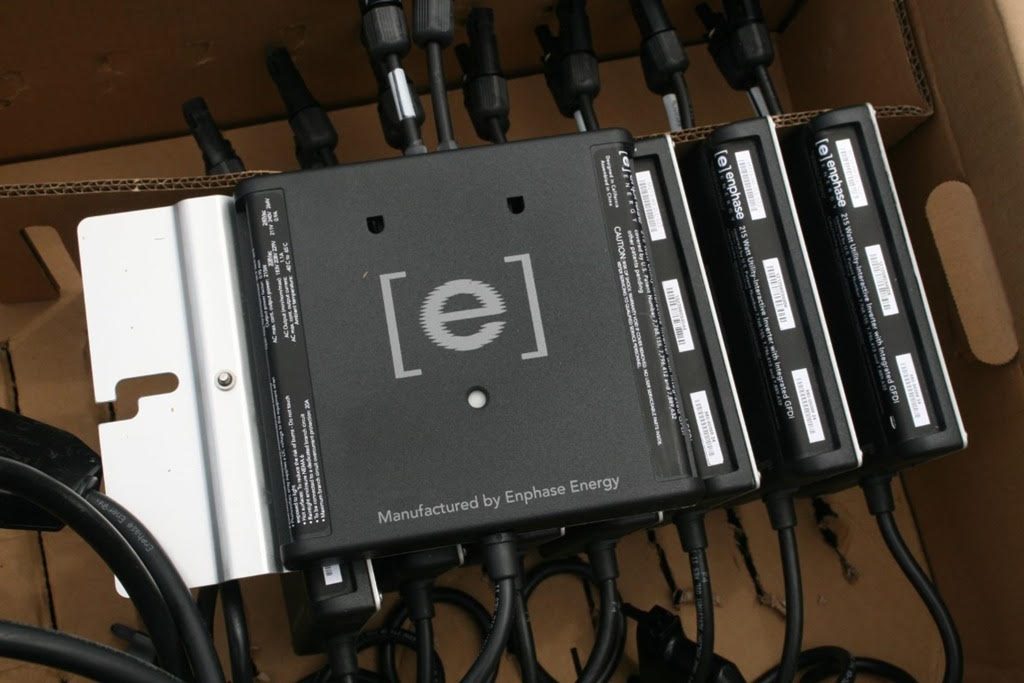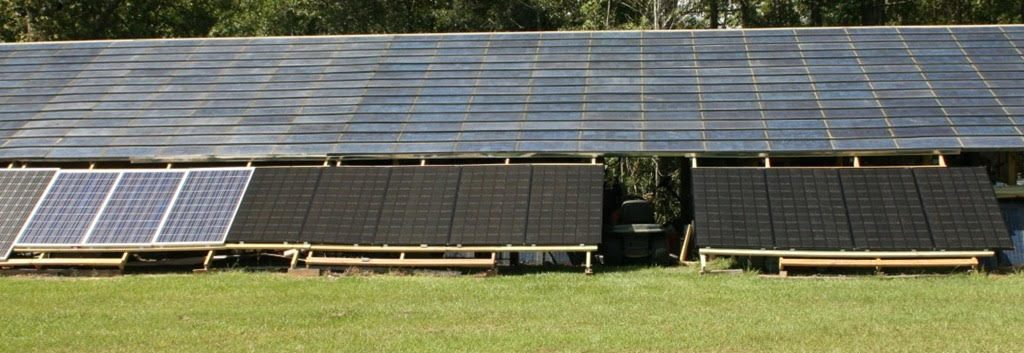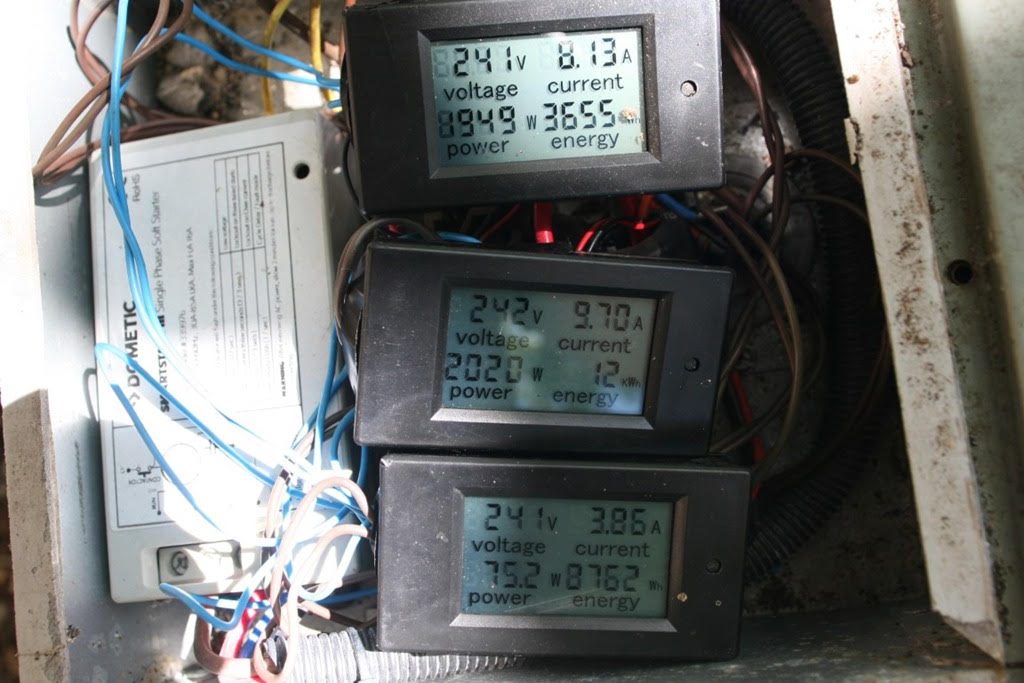What is a microinverter and why in the world would you want one? The first answer is easy. Whereas a regular grid-tie inverter takes the power from a bunch of panels and injects it into the powerline, a single microinverter bolts onto the back of each panel. The solar panel’s MC4 connectors plug into one side of the microinverter and a connection to the 240 ac power line plugs into the other side. This makes setting up a grid tie system very easy, though in most cases you still have to have the disconnects and special metering arrangements made with your power company. Look there’s a box full of microinverters! A company called Enphase is the big player. Their fuzzy “e” logo is very disturbing to someone like me with eye problems.

The problem I saw with them when I first looked into the matter was that each micro inverter was close to $200, or about double or triple the price of a typical solar panel from Sun Electronics. Then there was the power output. The M215, shown above, only outputs 215 watts. Hook it to a 300 watt panel and you still get 215 watts, so you are wasting some of your power at peak times. Enphase makes the argument, though, that you get more consistent power output over the course of the day. It is kind of a dubious argument, but there is some merit to it in special cases, such as a project I am currently working on. Shortcomings aside, there may be some good to come of using these. For some reason, tons of them have been dumped, brand-new-in-box, onto the open market at dirt cheap prices, like around $30. (A word of warning, though, make sure you can get the cables and beware of the price of cables! ) At that price it gets interesting, but you need to use caution. A friend drove down from South Carolina and dropped off a case of the M215s and a pallet of panels he wanted me to try. The M215 uses a lower voltage than the newer models, so he made sure he brought me a pile of 60 cell panels. Turned out they were really 96 cell panels, shipped by mistake. He had not even looked at them. I keep telling him to buy from Sun Electronics, but he doesn’t listen! The 96 cell panels put out nearly 60 volts whereas a 60 cell panel is usually around 36, open circuit. 72 and 96 panels are now the norm and I guess that is why the older microinverters are on the surplus market. All but two of those 60 cell panels are equipped with microinverters. The blue ones are 270 watts and the black ones are 300 watts.

Now I mentioned that having that controlled output could be useful. An experiment that we are running involves connecting the microinverter’s power line to the MOTOR side of the contactor in a central a/c compressor. I have 10 microinverters connected to my a/c. What happens is…nothing, until the thermostat clicks the contactor starting the a/c and connecting to the microinverters. After 5 minutes, the sync light comes on and suddenly the a/c is using very little from the powerline. Huh? Okay, here’s the deal, a grid provider does not allow grid intertie, but mixing the power from the microinverters with the power from the grid, you get to use the solar power without backfeeding to the power company. So even though we are connecting grid intertie, there is zero flow and nothing for their electronic meter to report. This, of course, assumes you have selected an amount of microinverter power that does not exceed what the a/c is consuming. Here’s a picture of the meters inside my upstairs a/c compressor. The bottom meter is the power line. Lower left corner of it shows the a/c drawing 75.2 watts. Of course, the a/c needs more than that. The middle meter shows the power actually being consumed by the compressor and the top meter shows what is coming from the microinverters.

Because the microinverters take about 5 minutes to sync with the line before providing power, you want long run cycles. This scheme works best if you use a programmable thermostat to cool like crazy during sun hours and then ride through the night on the stored cool. At the present, this project is not on the grid power line, but on my solar microgrid. Yes, the microinverter WILL sync to a good sine wave inverter! It is taking a lot of the load off of my smallish inverter and definitely letting my batteries charge up quicker during the day. If you try this with your a/c on the grid, is this going to save you a ton of money? Probably not, but it is a fun experiment. I have a few more microinverter experiments I am working on and I’ll let you in on them, soon. If you want to try some of this stuff for yourself, John’s guys can fix you up with some super deals on 60 cell modules—Neal

Neal, I am similar to you, with the Electrical and Electronics Background. I love to see more of your experiments.